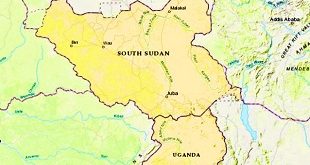
Kampala, Uganda | THE INDEPENDENT | The government of Uganda registered a lower-than-planned net borrowing (what it spent compared to what it borrowed) in the month of September, which also closed the first quarter of this financial year. This was mainly because of the slow implantation of government projects, as well as less readily available external aid, rather than a better capacity to domestically fund its budgetary needs, as revenues also registered a shortfall.
According to the Ministry of Finance, Planning and Economic Development, Government operations during the month resulted in a net borrowing of 496.8 billion shillings which is lower than the 745.85 billion that had been programmed for the month. “This was largely on account of lower than projected expenditure as both expenses and net acquisition of non-financial assets were short of their respective programs for the month,” says the ministry in its monthly performance report for September.
According to the Uganda Revenue Authority, tax collections for September 2024 amounted to 2.1 trillion shillings, while non-tax revenues and grants added another 174.72 billion and 59.51 billion shillings respectively to a total of 2.34 trillion. URA had been given a collection target of 2.186 trillion shillings for the month, but it fell short by 81.3 billion, meaning that the impact of these shortfalls on net borrowing was more than offset by the expenditure underruns during the month.
Regarding the performance of revenue categories, all registered shortfalls though to varying extents, with taxes on income, profit, and capital gains failing to hit the targets by a total of 58.71 billion shillings, while taxes on international trade and transactions were short by 27.7 billion. Taxes on goods and services performed better with a smaller shortfall of 3.87 billion shillings, while non-tax revenues registered a performance of 98.5 percent with a shortfall of 2.7 billion.
However, the September revenue performance does not reflect the overall performance since the financial year 2024/2025 began. Since July 1, cumulative domestic revenue collections performed above target, with a total of 6.91 trillion, which was higher than the targeted 6804.8 trillion by 109 billion shillings. On the other hand, project grants have been hard to realise, with more than 60 percent of the expected not getting.
The Ministry report shows that of the projected 152.2 billion from development partners to fund various projects during September, only 59.5 billion was realised. On the side of expenses, the government spent a total of 2.69 trillion shillings in September, which was less than the planned 2.76 trillion, implying a performance of 97.7 performance.
The subcategories that performed below expectations during the month included compensation of employees as well as purchases of goods and services among other expenses. On the other hand, government grants and social benefits expenditures were above what was planned for the month. Grants to local governments amounted to 676.9 billion, showing an excess of 62 percent, while what was spent on social benefits was 60 billion out of the planned 56.7 billion shillings.
The government met its planned payment of interest, with domestic and external totaling 631.3 as had been planned. The delays or lengthy process of preparing and disbursing grants and social benefits saw some carried forward from the July and August plans to September. However, some expenses under the purchase of goods and services were frontloaded in the first two months of the quarter.
On net acquisition of non-financial assets (including land and others), the government spent 142.22 billion shillings out of the programmed 503.2 billion shillings, with this underperformance attributed to disagreements between the state and landlords. “The underperformance (by 71.7 percent) under this expenditure category was partly explained by project execution challenges such as delays in compensation due to disagreements on valuation between government and land owners, long procurement processes, etc which hinder timely disbursement of funds,” says the ministry.
Last week, the Ministry of Finance released 15.99 trillion shillings for the next three months (second quarter), with the main beneficiaries being debt and treasury operations with 5.6 trillion.
Almost 2 trillion went to salaries and wages, 3.71 trillion for non-wage recurrent expenditure, and 4.60 trillion for development projects, including infrastructure, health, and agriculture.
*****
URN
 The Independent Uganda: You get the Truth we Pay the Price
The Independent Uganda: You get the Truth we Pay the Price



